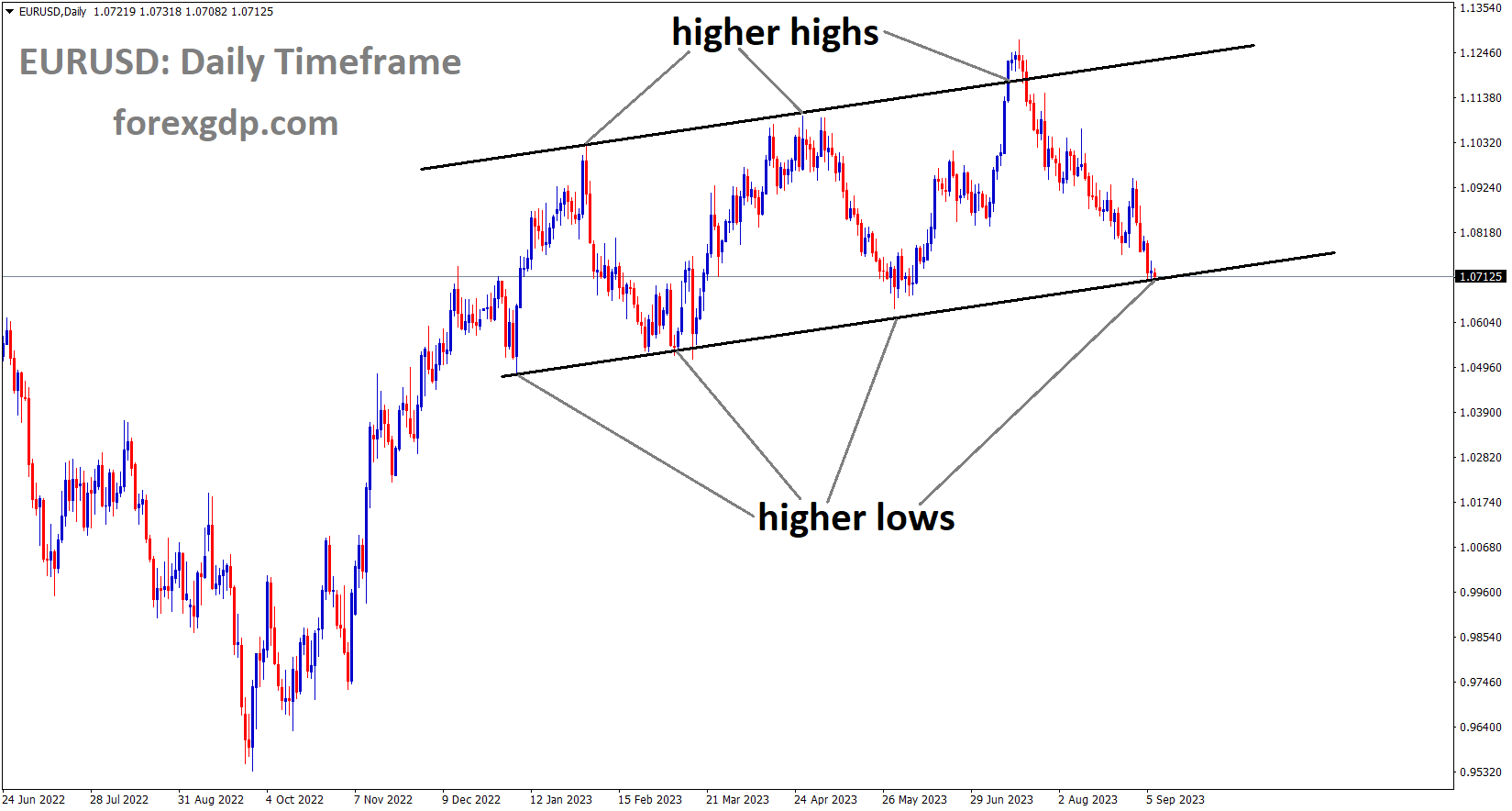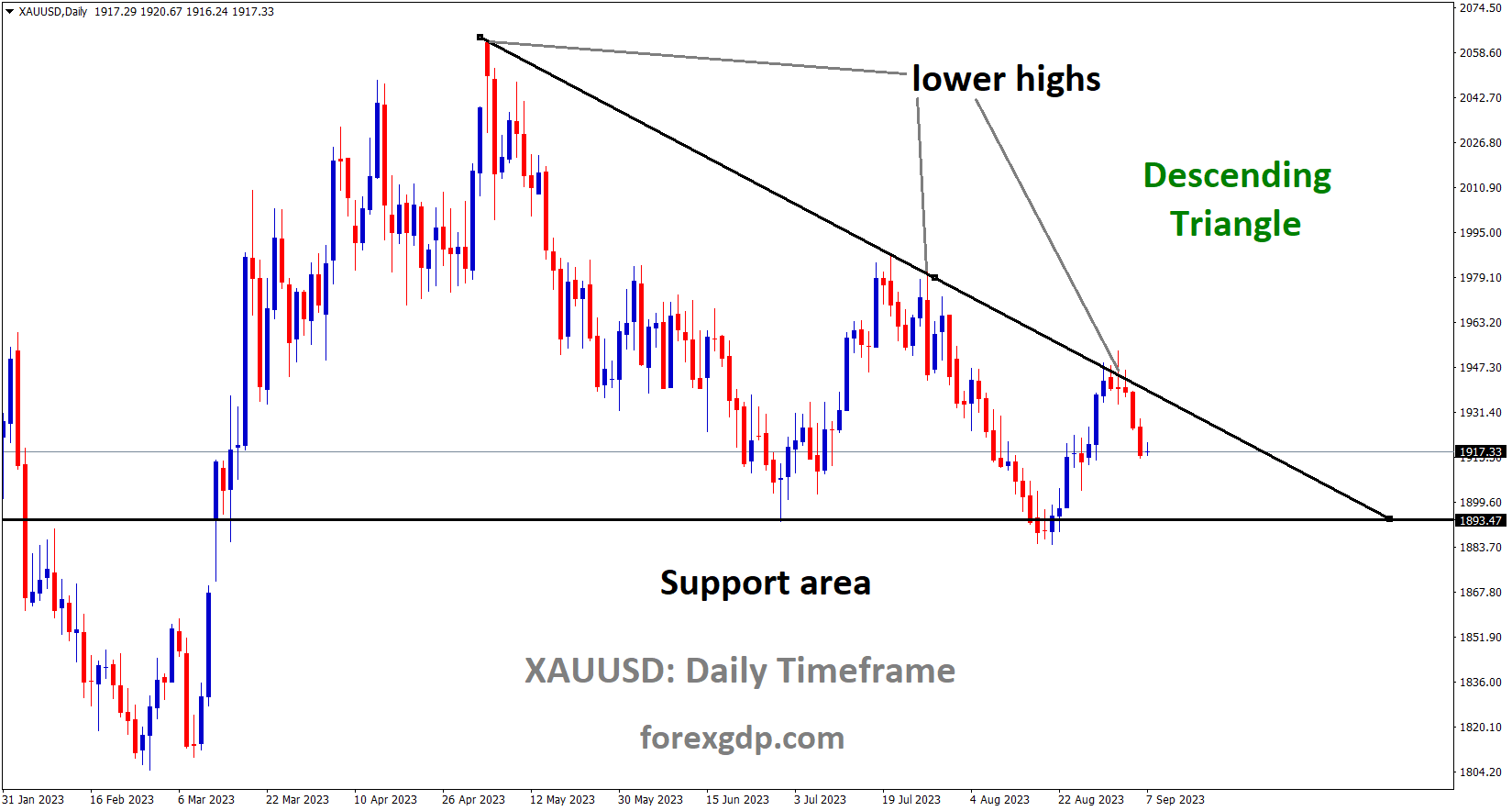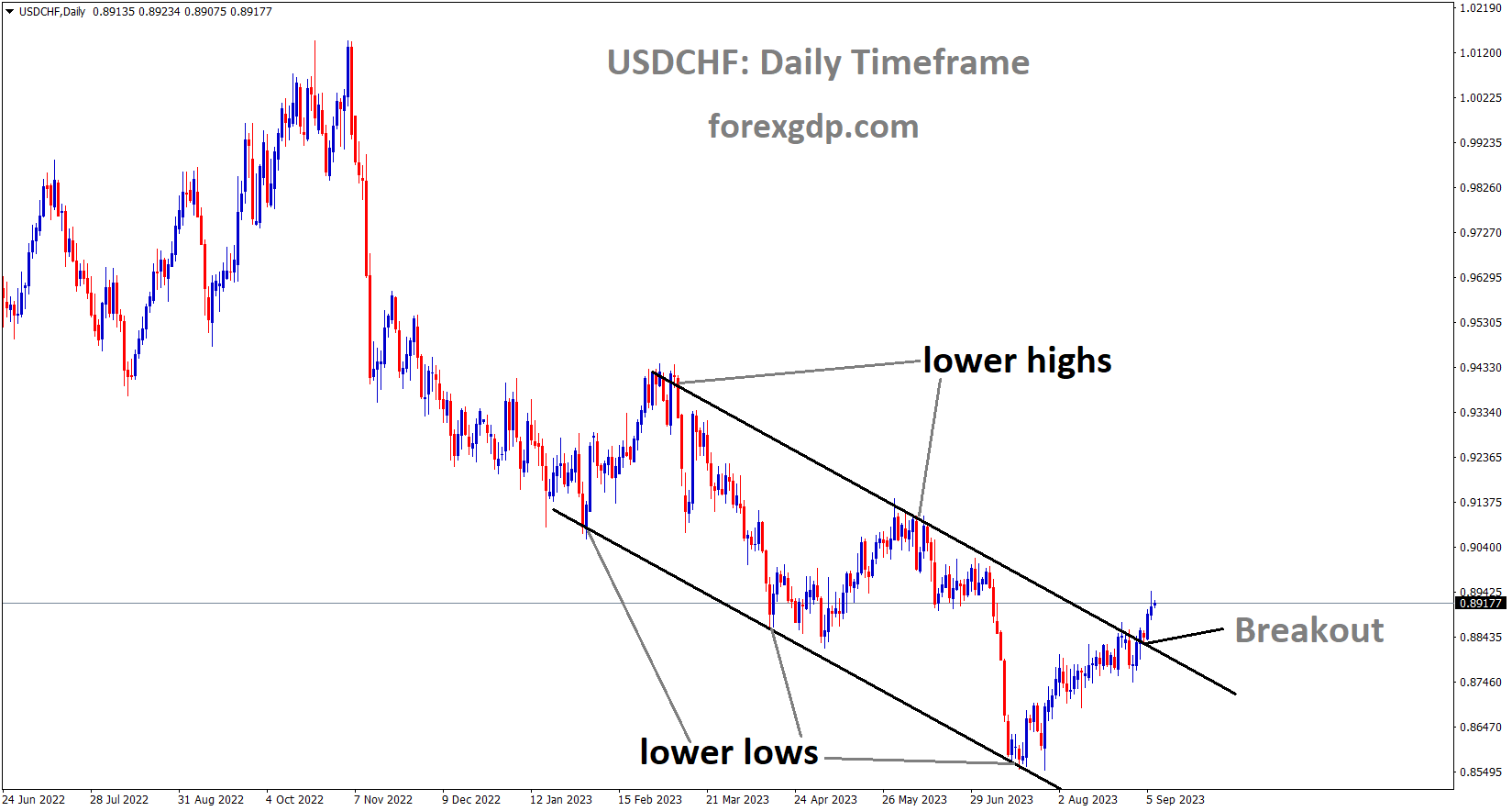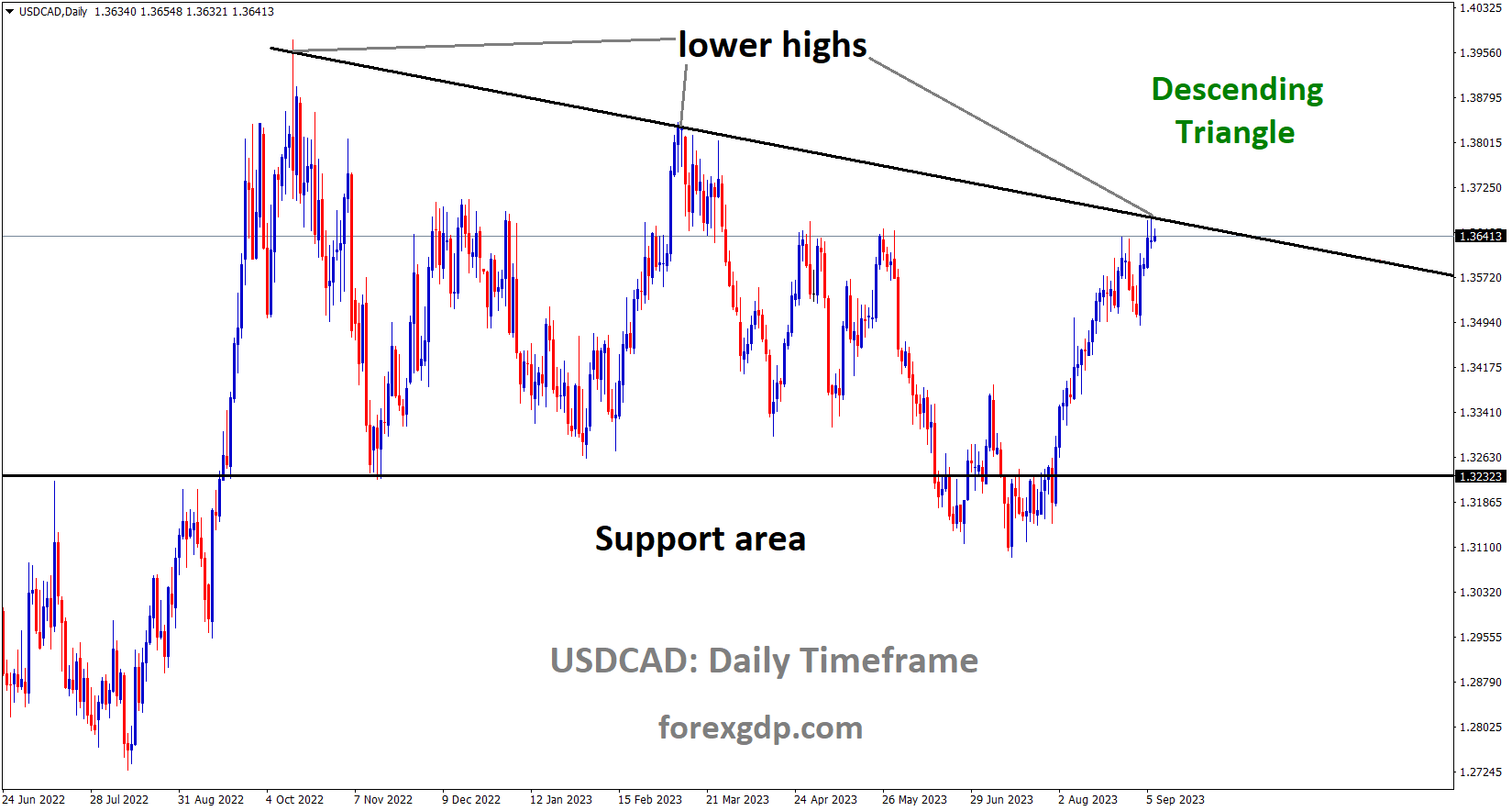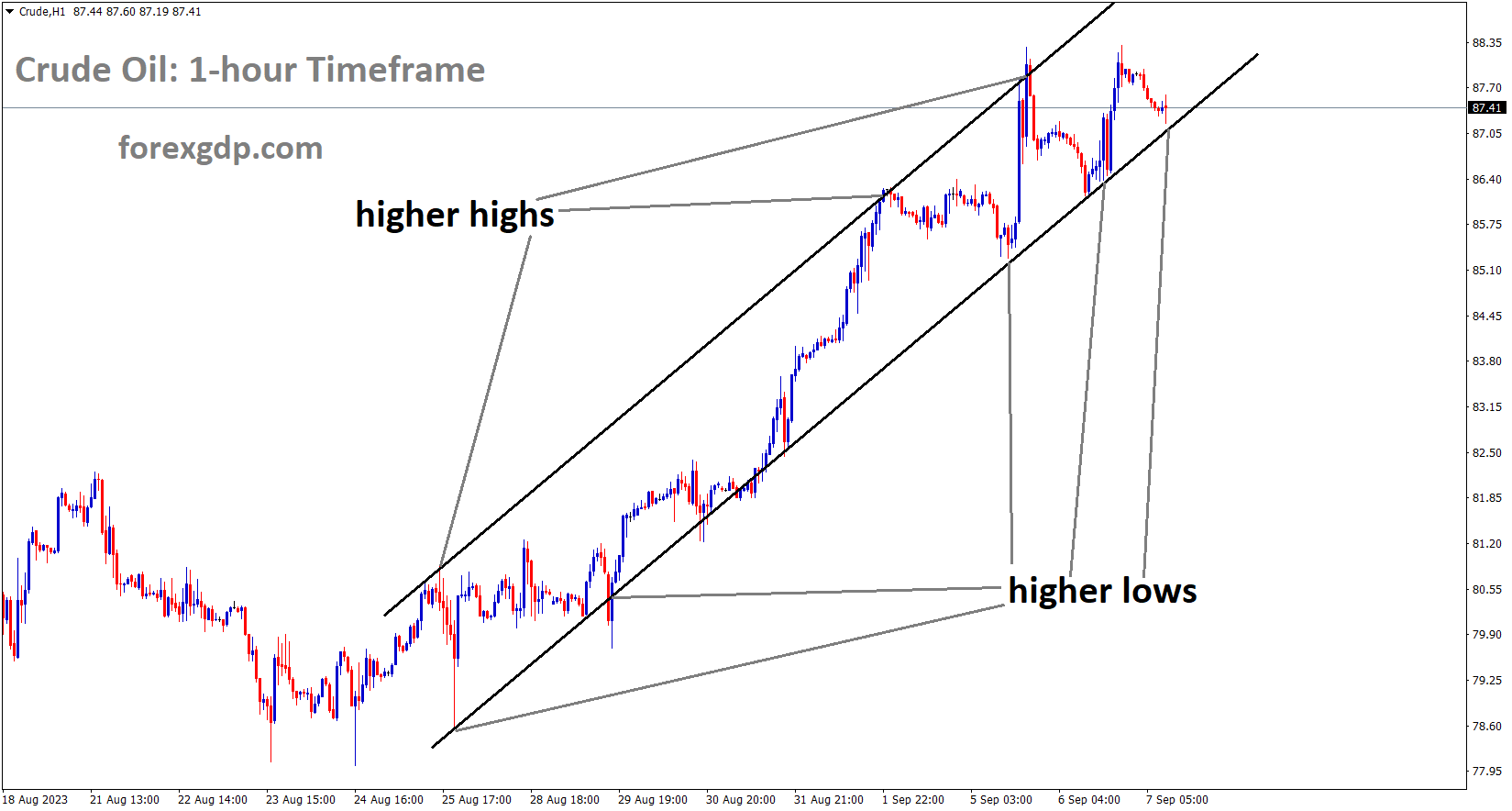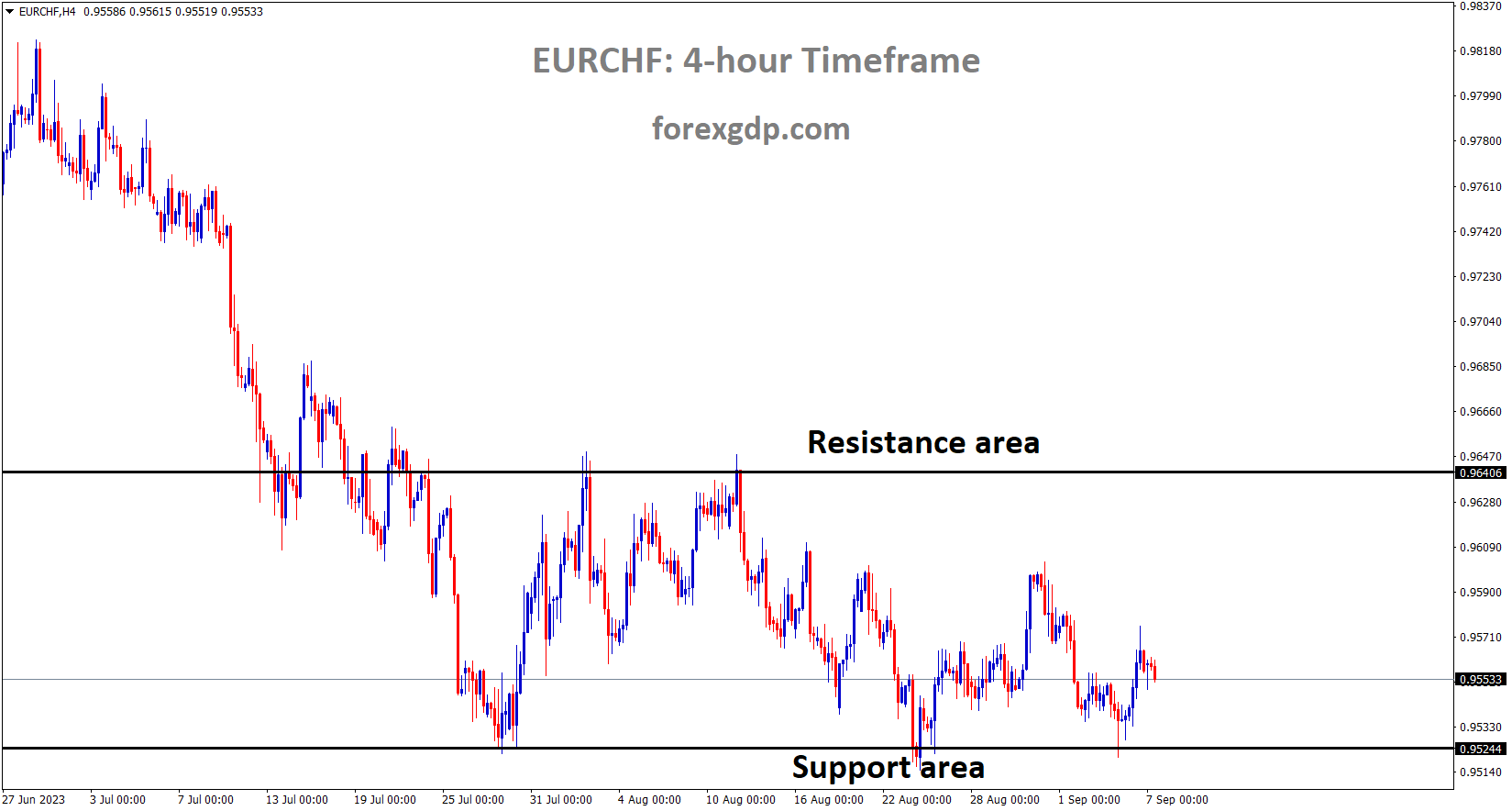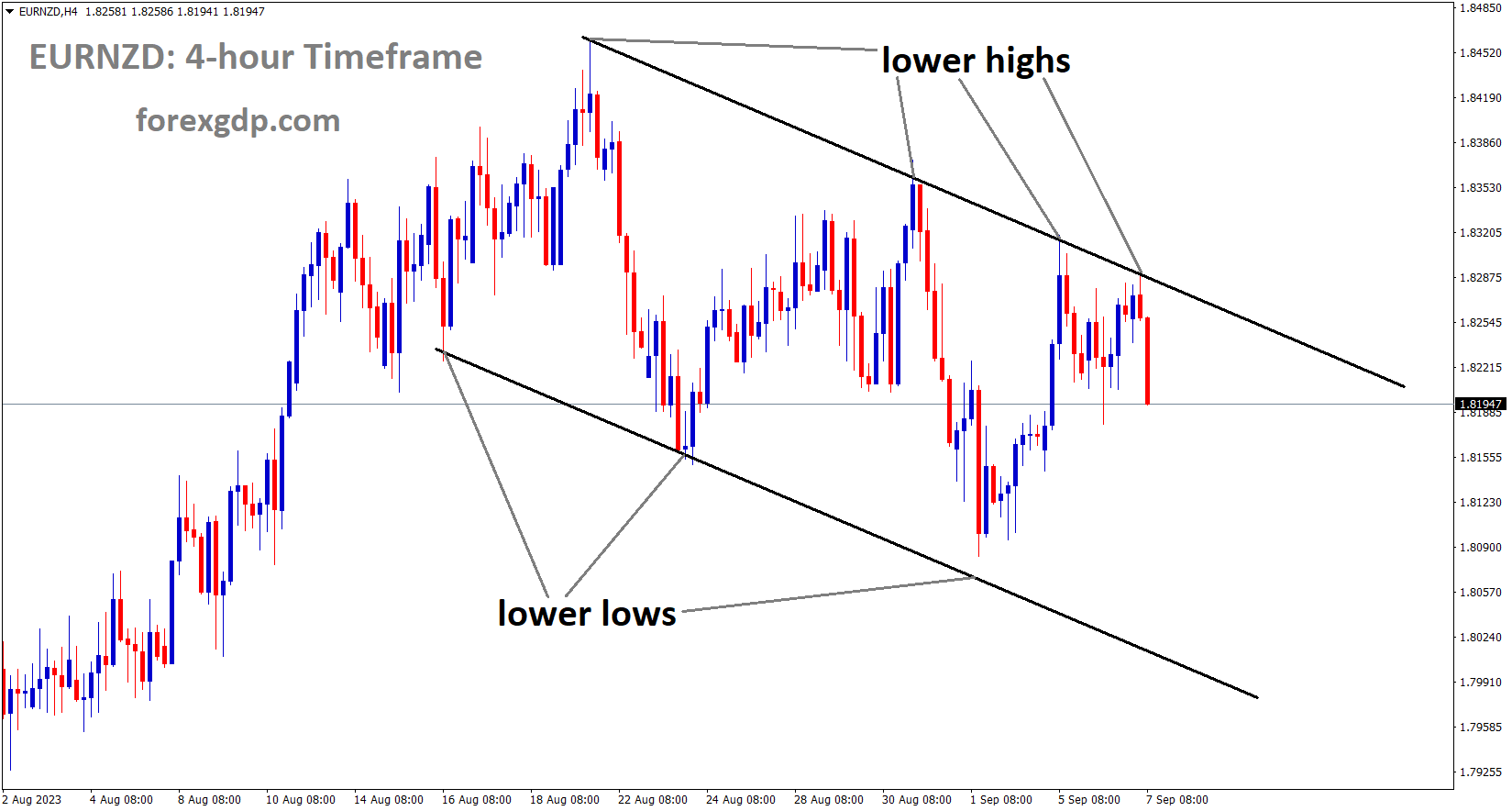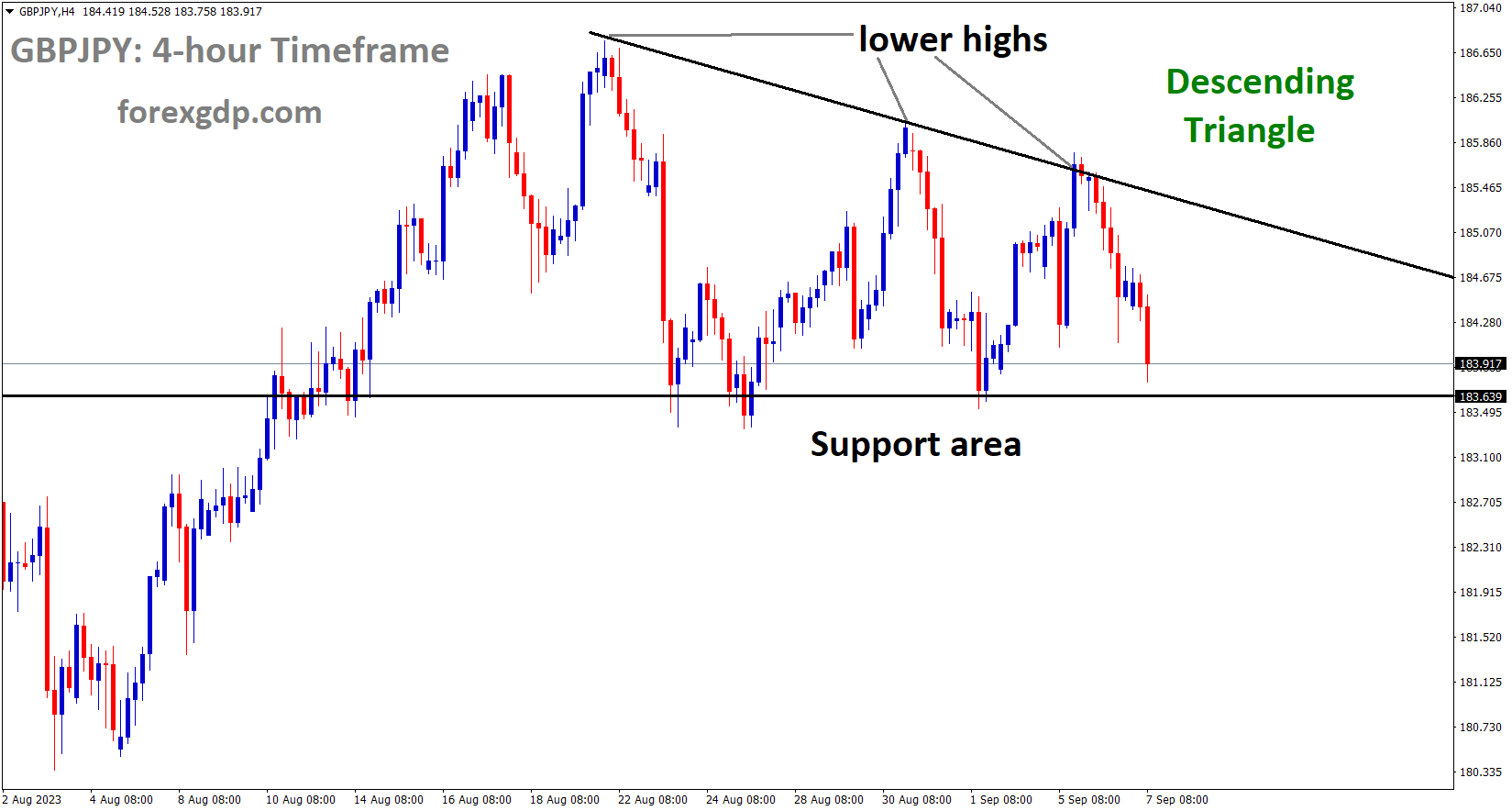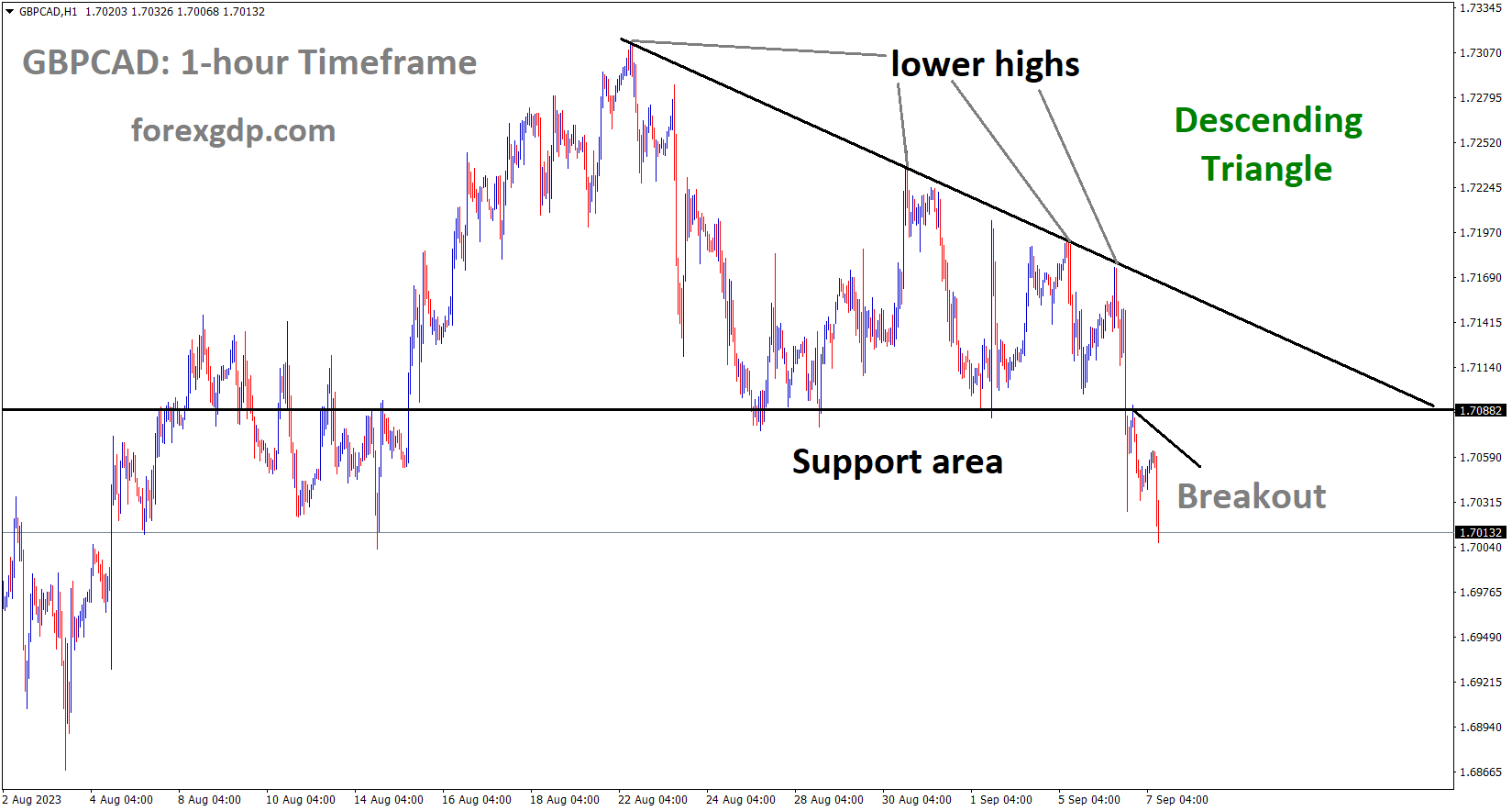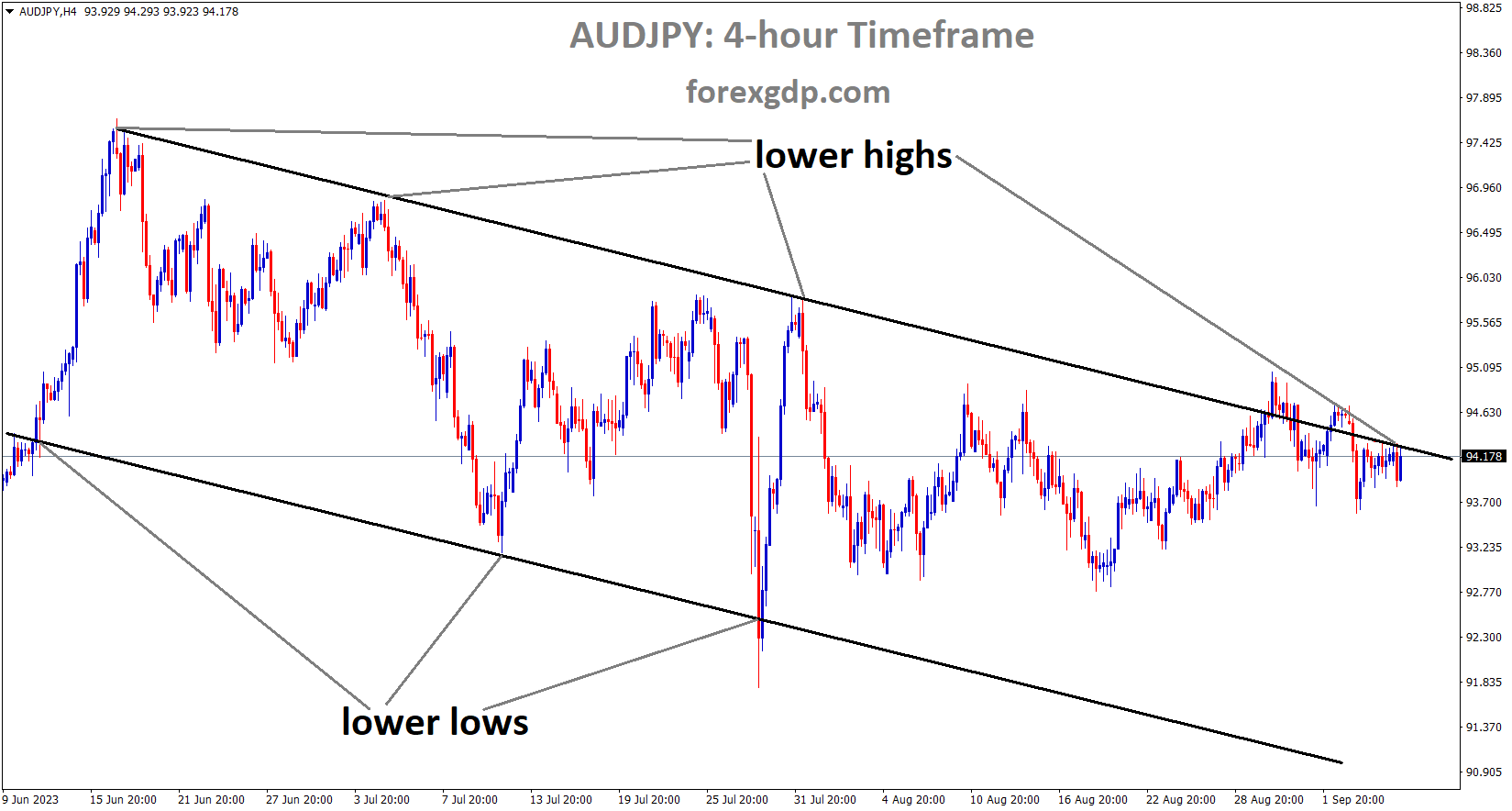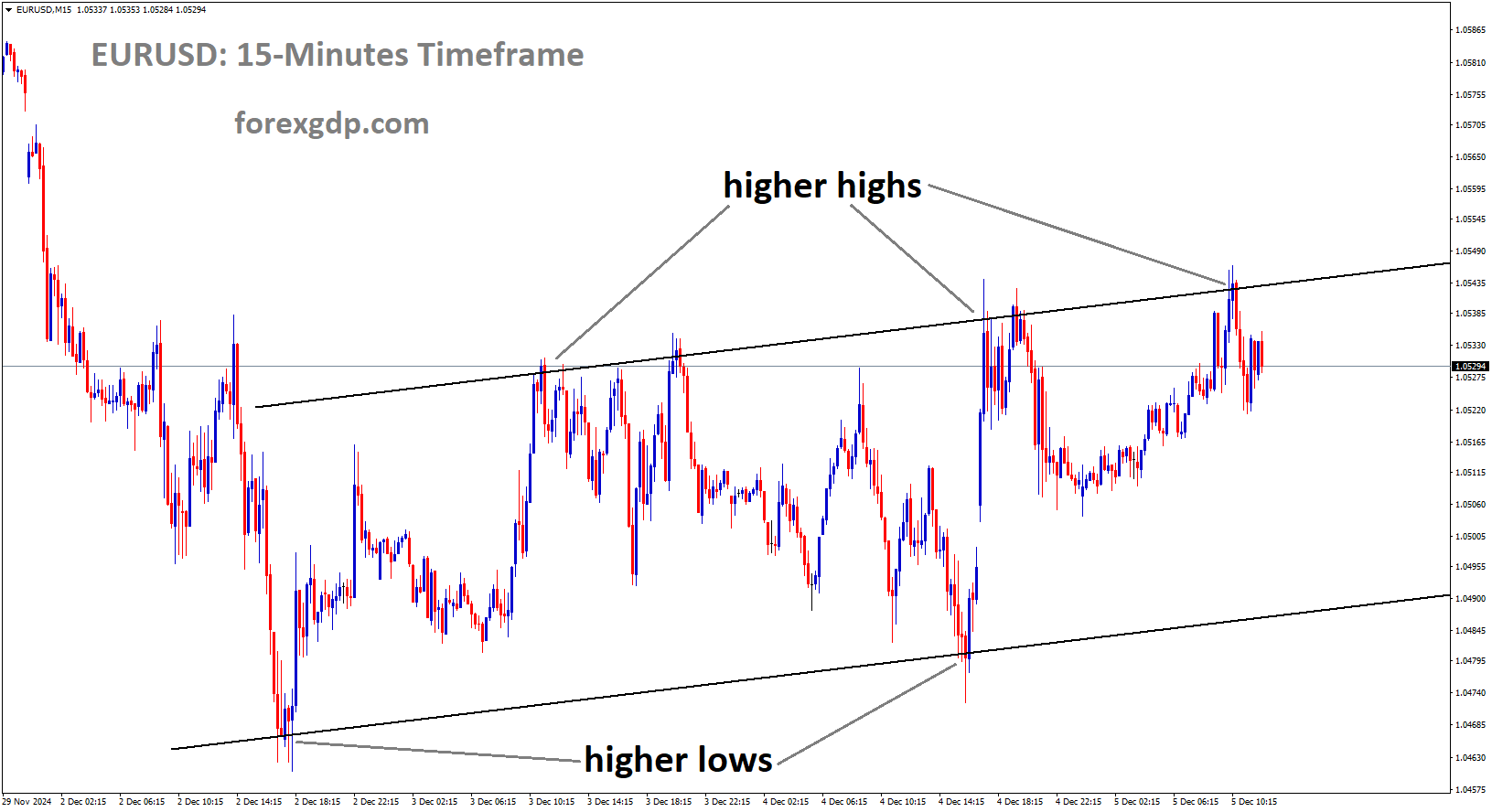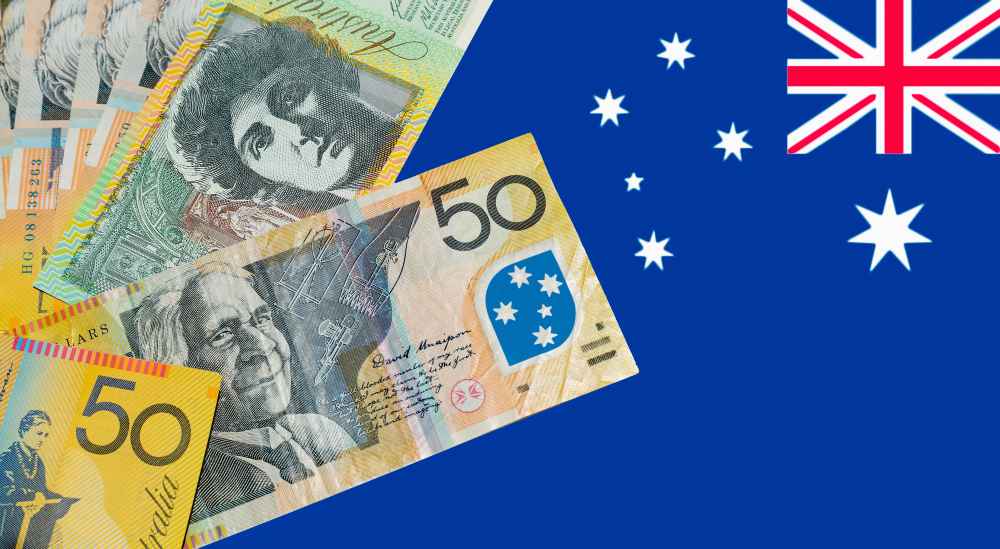EURUSD Analysis
EURUSD is moving in an Ascending channel and the market has reached the higher low area of the channel
The US dollar strengthened after the US Non-Manufacturing PMI came in higher than expected. The FED lowers interest rates in Q1 2024 due to the stability of the US economy.
The USD Index DXY, which tracks the greenback against a basket of its main competitors, maintains strong buying pressure and approaches the 105.00 level on Thursday. On Thursday, the index advanced for the third session in a row, aided by an equally strong move higher in US yields seen in recent days. The recent price action in the dollar also coincides with increased market speculation about the Federal Reserve and the possibility that it will begin cutting rates in Q2 2024.
Furthermore, according to CME Group’s FedWatch Tool, investors expect the Fed to keep rates unchanged for the rest of the year, though a rate hike in November is not completely ruled out given the US docket’s persistent upside surprises. The index’s recent strong recovery has opened the door to a possible visit to the 105.00 region sooner rather than later. Meanwhile, the good health of the US economy continues to support the dollar, which appears to have reignited the narrative surrounding the Federal Reserve’s tighter-for-longer stance. On the other hand, the notion that the dollar may face headwinds as a result of the Fed’s data-dependent stance against the current backdrop of persistent disinflation and a cooling labour market appears to have regained some traction recently.
XAUUSD Analysis
XAUUSD Gold price is moving in the Descending triangle pattern and the market has fallen from the lower high area of the pattern
The US ISM Non-Manufacturing PMI was 54.5 in August, up from 52.7 the previous month. Following the release of the data, gold prices fell. Among FED members who favour rate hikes or rate cuts.
The gold price XAUUSD has recovered from a one-week low to $1,918 in the early hours of Thursday’s Asian session, after falling for the previous five days. In doing so, the bright metal seeks more clues to defend the recent downside despite being bearish amid firmer US Dollar and US Treasury bond yields, not to mention Chinese fears. The gold price remains under pressure as market participants flock to the US Dollar in response to stronger US data and hawkish Federal Reserve Fed signals. The same depicts the better odds of a soft landing in the US versus fears of a hard landing elsewhere in the major economies, increasing the allure of the Greenback and weighing on the XAUUSD. Following Wednesday’s initial decline, the US Dollar Index DXY rose to a new high since March 15, close to 105.00 at press time. The US ISM Services PMI rose to a six-month high of 54.5 in August, versus 52.5 expected and 52.7 previously, according to data released on Wednesday. Furthermore, the final readings of the S&P Global Composite and Services PMIs for the month were 50.2 and 50.5, respectively, compared to initial estimates of 50.4 and 51.0 in that order. It should be noted that all three major components of the ISM Services PMI, namely Employment, New Orders, and Prices Paid, rose significantly above previous readings, assisting the US Dollar to reverse its early-day decline. Earlier this week, the US Factory Orders for July fell to their lowest level since mid-2020, but the details about the orders, excluding transportation, shipments of goods, and inventories, were impressive enough to justify the Fed’s hawkish stance. In other news, Fed Governor Christopher Waller defended hawkish monetary policy in a CNBC interview, and Cleveland Fed President Loretta Mester ruled out rate cuts. However, Federal Reserve Bank of Boston President Susan Collins cited the risk of an overly restrictive monetary policy stance as evidence of the need for a patient, careful, but deliberate approach.
Furthermore, the Fed’s Beige Book pushed back expectations of a policy pivot or rate cut, stating, “US economic growth was modest in July and August amid a cooling labour market and slowing inflation pressures.” While US data and Fed signals point to a more likely soft landing in the US, favouring the US Dollar and weakening the XAUUSD, economic concerns about China, the Eurozone, and the UK appear to be directing market participants towards the Greenback and amplifying the bearish bias about the Gold Price. Aside from data from the United States and Federal Reserve Fed signals, concerns about China, one of the world’s largest gold customers, weighed on the precious metal. The early-week disappointment from China Caixin Services PMI added to the market’s lack of confidence in the Dragon Nation’s stimulus to weigh on Beijing concerns and the Gold Price. The tension between the United States and China over trade conditions and Taiwan could be along the same lines. Late on Tuesday, US Commerce Secretary Gina Raimondo ruled out any revisions to US tariffs imposed on China during President Donald Trump’s administration until an ongoing review by the US Trade Representative’s USTR Office was completed, according to Reuters, citing the diplomat’s CNBC interview. These remarks signal the continuation of US-China tensions, which, combined with concerns about China’s economic recovery, weighed on sentiment, underpinning the US Dollar’s rise and weighing on the Gold Price.
In response to this backdrop, US 10-year Treasury bond yields rose to a two-week high of around 4.30%, with the two-year refreshed weekly high above 5.0%, providing significant strength to the US Dollar and favouring gold sellers. Furthermore, the Wall Street benchmark closed in the red for the second day in a row, putting pressure on demand for riskier assets such as gold. Looking ahead, multiple Federal Reserve Fed speakers are scheduled to deliver speeches, which may instill volatility in the markets, making it even more important to monitor gold price movements. Furthermore, the weekly US Initial Jobless Claims, quarterly readings of Nonfarm Productivity, and Unit Labour Costs for the second quarter Q2 will be important to monitor for clear direction. Furthermore, headlines about China and recession woes in major economies other than the US, not to mention Sino-American tension updates, are important for new impulse.
USDCHF Analysis
USDCHF has broken the Descending channel in upside
During the bank crisis, the Swiss government will implement a backstop policy for public withdrawal of funds.
Switzerland moved on Wednesday to enact a state liquidity provision that it needed under emergency law to use in its rescue of Credit Suisse, according to the Federal Council. Credit Suisse was granted access to a public liquidity backstop of 100 billion Swiss francs in March after becoming embroiled in market turmoil and clients rapidly withdrawing funds, resulting in the Swiss bank being taken over by its former rival. The federal government backed the backstop, allowing the struggling bank to access more liquidity from the central bank than it would have otherwise.
The Federal Council sees the internationally widely used crisis tool as a way to strengthen the financial sector’s stability. Individual provisions introduced in March with an emergency ordinance could become law as a result of the dispatch on the introduction of the backstop announced on Wednesday. According to a person familiar with the situation, Parliament is expected to consider the bill in December at the earliest.
USDCAD Analysis
USDCAD is moving in the Descending triangle pattern and the market has reached the lower high area of the pattern
The Bank of Canada has a 5.0% interest rate and, according to BoC Governor Tiff Mackhlem, a rate hike is possible at the upcoming meeting. Following the policy hold state, the Canadian Dollar performed poorly.
Despite the Bank of Canada’s hawkish stance, the Canadian dollar was slightly weaker on Wednesday, as the broader US dollar maintained a positive bias following remarkably strong US economic data. USD/CAD was up about 0.17% to 1.3657 in late afternoon trading in New York, probing a key resistance zone and hovering around its best levels since late March. Better-than-expected data from the United States’ service sector boosted Treasury yields across most maturities, raising the prospect that the FOMC will deliver additional tightening this year and maintain a restrictive stance for an extended period to ensure sustained convergence of inflation towards the 2.0% target. This chain of events created a favourable environment for the US dollar. With riskier currencies available, the Canadian dollar struggled, ignoring the Bank of Canada’s monetary policy announcement. In context, the institution led by Governor Tiff Macklem maintained interest rates at 5.0% while leaving the door open to further policy tightening in light of little downward momentum in underlying inflation.
Crude oil Analysis
Crude oil price is moving in an Ascending channel and the market has reached the higher low area of the channel
While the Bank of Canada’s message suggests that future rate hikes are possible, markets remained sceptical in the face of looming economic headwinds. The central bank acknowledged the current difficulties, noting that the economy has entered a period of slower growth, which has coincided with a drop in consumption and housing activity. Against this backdrop, traders saw little reason to reprice the bank’s terminal rate higher. Looking ahead, the relative strength of the US economy versus its Canadian counterpart, as well as the Fed’s more favourable position to implement further policy tightening, may provide USD/CAD with room for further upward movement, particularly if market volatility rises and risk aversion takes hold. In the short term, this could mean new multi-month highs for the pair.
EURCHF Analysis
EURCHF is moving in the Box pattern and the market has rebounded from the horizontal support area of the pattern
Germany’s industrial production fell -2.1% in July, compared to a 1.5% drop in June. Data from the Eurozone’s economic powerhouse came in at -0.80%, compared to -0.50% expected and -1.4% in the previous reading.
The German Industrial Production fell more than expected in July, according to official data released on Thursday, indicating further weakness in the country’s manufacturing sector activity. Industrial output in the Eurozone’s economic powerhouse fell 0.8% month on month, according to the federal statistics authority Destatis, compared to -0.5% expected and -1.4% previously. Annually, industrial production in Germany fell 2.1% in July, following a 1.5% drop in June.
EURNZD Analysis
EURNZD is moving in the Descending channel and the market has fallen from the lower high area of the channel
Manufacturing sales in New Zealand increased by 2.9% versus a 2.1% decrease. The ANZ Commodity Price Index fell to 2.9% in August from 2.6% the previous month, while the trade index fell to 0.4% from 1.5% the previous month.
On the Kiwi front, the latest data from Statistics New Zealand showed on Thursday that the country’s Manufacturing Sales improved to 2.9% in the second quarter, compared to a 2.1% drop in the previous reading. Earlier this week, the ANZ Commodity Price for August fell to 2.9%, down from 2.6% in July. The New Zealand Terms of Trade Index rose 0.4% in the second quarter, compared to a 1.5% drop in the previous reading and a 1.3% drop expected. Aside from that, disappointing Chinese economic data have an impact on market sentiment and put pressure on the China-proxy New Zealand Dollar (NZD). Nonetheless, China’s services sector expanded at its slowest pace in eight months in August. Caixin reported on Tuesday that the Chinese Services Purchasing Managers’ Index (PMI) fell from 54.1 in July to 51.8 in August.
GBPJPY Analysis
GBPJPY is moving in the Descending triangle pattern and the market has reached the horizontal support area of the pattern
Junko Nakagawa, a member of the Bank of Japan’s Board of Directors, stated that FX Up and down moves are normal, and higher volatility moves must be controlled. Once wages are in line with business profits, YCC will be adjusted. Until rates fall and there is no change in YCC.
Junko Nakagawa, a board member of the Bank of Japan (BoJ), stated on Thursday that “the most important thing is for FX moves to reflect economic, financial fundamentals and move stably.” There is an equal degree of upside and downside inflation risk. Can exit negative rate policy when the economy is strong enough to weather headwinds and demand strengthens as wage growth prospects improve. There is no predetermined order, timing, or interval for phasing out ycc, negative rate because that will depend on financial developments at the time. It is impossible to predict how long it will take to determine whether 2% inflation can be sustained. I am not going to comment on the FX levels. Monetary policy does not, and cannot, directly target foreign exchange. As the country’s central bank, the Bank of Japan will closely monitor market and currency movements, as well as their impact on the Japanese economy.
We control the yield curve, so any improvement in bond market function is limited to some extent. Further changes to the YCC cannot be ruled out if inflation expectations rise further, but this is not a pressing issue at the moment. A strong outcome in next year’s wage negotiations would be required, but not sufficient, to consider ending negative rates. Want to consider factors other than wages when deciding on future policy changes.
GBPCAD Analysis
GBPCAD has broken the Descending triangle pattern in downside
According to Bank of England Governor Andrew Bailey, we are nearing the end of the rate hike cycle. Further tightening pushed the UK into recession. So raising interest rates in September is the riskier option.
The Pound Sterling is under pressure following Governor Andrew Bailey’s statement that the Bank of England (BoE) is nearing the end of its series of interest rate increases. During his testimony to Parliament, Bailey and two members of the Monetary Policy Committee (MPC) expressed concern that further monetary tightening could lead to an unnecessarily severe economic recession.
AUDJPY Analysis
AUDJPY is moving in the Descending channel and the market has reached the lower high area of the channel
According to RBA Governor Lowe, interest rates are raised if inflation exceeds expectations. Because the unemployment rate is lower after 40 years, the Australian Dollar has remained in this range.
On Thursday, outgoing Reserve Bank of Australia (RBA) Governor Philip Lowe delivers his final speech titled ‘Some Closing Remarks’ at the Anika Foundation in Sydney. My recent focus has been on risk wages and profits outpacing rates consistent with a return to the inflation target. If this risk materialised and inflation became sticky, tighter monetary policy would be required. Returning to a world where inflation tracked in a very narrow range will be difficult. Inflation will most likely be more volatile near the target. A flexible inflation target has been beneficial to Australia. It is possible that Australia can maintain unemployment rates lower than those seen over the last 40 years. Positively, we are now in an environment of stronger nominal wage growth. The recent productivity record is not encouraging; the solution is fundamentally political.
Interest rates have an impact on housing prices, but they are not the sole reason Australia has some of the highest prices in the world. The issue that defined my term the most was forward guidance on interest rates during the pandemic. Guidance was widely understood to be a commitment rather than a conditional statement. With the benefit of hindsight, I believe we did too much during the pandemic.
China Premier Li Quiang met with Australian Prime Minister Anthony Albanese in Jakartha. Chinese firms may invest in Australia, and cooperation must be strengthened.
According to Chinese state media, China’s Premier Li Qiang met with Australia’s Prime Minister Anthony Albanese in Jakarta on Thursday. Following their meeting, China’s Premier Li stated, “We hope Australia will adopt an objective, fair attitude towards Chinese firms’ investment and operation in Australia.” China will continue to open up and provide a larger market for countries such as Australia. Both parties must handle disagreements in a respectful manner.
China is willing to collaborate with Australia to maintain peace and stability in the Asia-Pacific region. In the past year, China-Australia relations have maintained their positive momentum. China will continue to broaden its high-level opening to the outside world, providing a larger market for countries such as Australia.
Don’t trade all the time, trade forex only at the confirmed trade setups.
Get Live Free Signals now: forexgdp.com/forex-signals/

